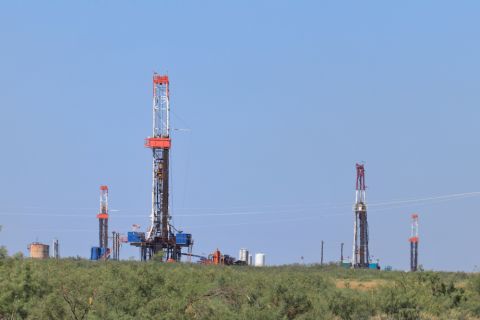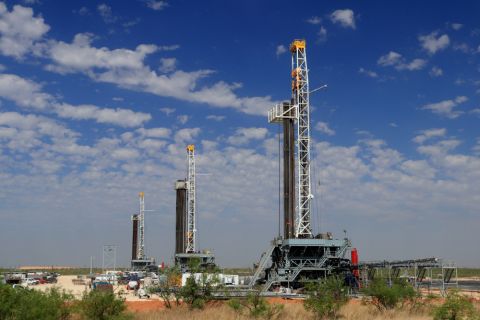Analysts think the global oil market is improving. Here, some oil observers give their predictions and sound a cautionary note.
It appears the tide is turning for world oil demand and prices. But experts still disagree on where the market is headed.
During the past two years, the sudden financial crisis, recession and energy-demand destruction caused oil prices to fall so far (down by 70% at one point) and so fast that even the most seasoned observers were shocked.
But as 2010 begins, semi-sustained economic growth is supporting a rebound in world oil consumption. Indeed, the world economy is forecast to grow by 2.9% this year after a contraction of 1.1% in 2009.
Most analysts agree that much of the growth will come from emerging Asian economies. China’s economy is expected to grow by about 8.5% this year, after growing by 8.9% through third-quarter 2009. Massive government spending continues to lead the nation out of the global economic crisis.
Forecasts of growth rates for other countries vary. No one organization or economist has a lock on this. Standard & Poor’s predicts the U.S. economy will grow by 1.9% this year, while the Organization for Economic Cooperation and Development (OECD) pegs U.S. growth at 2.5%.

For 2011, the OECD predicts the U.S. economy will grow by 2.8%, the Eurozone by 1.7%, Japan by 2%, and China by a robust 9.3%. According to the Organization of the Petroleum Exporting Countries (OPEC), the Eurozone will grow by 0.5% and Japan by 1.1% in 2010.
Standard & Poor’s predicts global oil demand will reach 85.68 million barrels per day this year, while the Paris-based International Energy Agency (IEA) is more bullish, setting the mark at 86.2 million. The IEA predicts China, which accounts for the lion’s share of global demand growth, will consume an average 8.6 million barrels per day this year. The U.S. will consume about 18.9 million, an increase of 0.4% (after a contraction of 3.7% in demand in 2009), according to the agency.
In November, the Energy Information Administration (EIA) reported 2009 global oil consumption grew by 0.15 million barrels per day as it revised its expectations for worldwide demand upward.
OPEC reported that demand for its crude in 2009 reached 28.7 million barrels per day, a decline of 2.3 million from 2008. In 2010, global demand for OPEC crude is expected to average 28.5 million per day.
For 2010, the EIA predicts world oil consumption will rise by 1.26 million barrels per day, with non-OECD countries representing the largest share of the growth. OECD oil consumption will grow by 0.1 million barrels per day through 2010, largely due to an expected reversal of a downward trend in U.S. oil consumption that began in 2005, according to the agency.
At least one analyst disagrees with this assessment about the U.S. Says Deutsche Bank analyst Michael Lewis, “With oil intensity (use per unit of GDP) declining at circa 3% annually in the U.S., and GDP growth over the medium-term likely below that rate, oil demand in the U.S. appears to be on the downtrend from the peak already reached in 2004 to 2007.”
Oil price
Whether overall demand will expand or contract, it’s clear that U.S. crude oil inventories remained relatively sufficient in second-half 2009 and into 2010, although they did drop 1.7 million barrels as the year ended. U.S. commercial oil stocks (including oil, gasoline and distillates) fell by 19.4 million barrels in October 2009 to stand at 1.09 billion barrels, the largest drawdown since December 2007.
Despite sufficient oil stocks, optimism regarding an economic turnaround, combined with the impact of OPEC production cuts, has propped up oil prices. West Texas Intermediate (WTI) oil-futures prices for December 2009 contracts averaged $76 per barrel in October on the Nymex.
This year, oil prices will be affected by a variety of factors, new fields coming online and new technology. Financial factors include interest rates, the economic performance of developing countries, the dollar, and currency exchange rates.
In the mid-term, oil prices are expected to rise. In a recent report for Bernstein Research, analyst Ben Dell notes that oil sources will be more expensive to develop due to the increased complexity of source formations, heavy-oil sands and enhanced-recovery methods.
“Yet, even this high-cost oil will not be enough to meet global oil demand,” according to Dell. “Marginal consumption over the long term will likely be priced out by a series of price spikes, making our bullish price estimate of $110 by 2012 seem increasingly likely.”
Standard and Poor’s price points are more conservative, calling for WTI barrels to sell for $74.71 in 2010 and $78.02 in 2011.
Oil supply
Most forecasts call for global oil supply to top 86.4 million barrels per day this year. Total oil production by countries outside of OPEC averaged 50.1 million barrels per day during the first three quarters of 2009, about 0.5 million barrels per day higher than 2008.
The EIA agrees, noting that non-OPEC oil production was “surprisingly strong” in 2009, largely from higher-than-expected Russian production, which set a new record for the post-Soviet era by exceeding 10 million barrels per day in August.
Non-OPEC supply is expected to increase by 0.25 million barrels per day in 2010, as higher output from the Former Soviet Union, Brazil, and the U.S. offsets falling production in Mexico and the North Sea.
In fact, at press time, the U.S. was set to have its biggest one-year jump in production in nearly 40 years, averaging some 5.27 million barrels per day through October 2009, according to the EIA. If the final 2009 analysis shows production held at the current rate, the U.S. will have increased its oil production by 6.4%, year-on-year.
Driving the increase last year were Gulf of Mexico producers. According to the Minerals Management Service (MMS), the offshore area produced some 1.21 million barrels per day in 2009.
Meanwhile, more U.S. onshore producers are setting their sights on oil as natural gas prices continue to disappoint. Plays like the Bakken in North Dakota, which produced some 215,000 barrels per day in June 2009, are attracting more attention and capex dollars.
Yet, overall non-OPEC supply is likely to decrease in the coming years. “We expect non-OPEC oil production to be down about 2% in 2010,” says Dell. “This is in stark contrast with the IEA, which expects non-OPEC production to grow next year. What level production turns out to be depends on the contribution of seven key regions: the U.S., Canada, Mexico, U.K., North Sea, Russia, Brazil and Asia-Pacific.”
OPEC production averaged 29 million barrels per day during the first three quarters of 2009, down about 2.4 million barrels per day from year-earlier levels. The EIA expects OPEC oil production to rise gradually in 2010 to an average of 29.4 million barrels per day in response to an anticipated rebound in demand. In fact, OPEC surplus production capacity is forecast to remain more than 4 million barrels per day in 2010, versus an average 2.8 million barrels per day during 1998 to 2008.
In its recent World Economic Outlook report, the IEA stated that oil production can be raised from its current level of 83 million barrels per day to about 105 million barrels by 2030.
Meanwhile, Matt Simmons, a well-known energy expert, has long questioned the decline rates and other oil statistics provided by Saudi Arabia concerning its own fields. The chairman of Simmons & Co. International stands firm on his belief that global oil production rates will decline much faster than is currently predicted.
At the other end of the scale, IHS Cambridge Energy Research Associates (CERA) recently claimed that global oil production capacity will grow through 2030 with no evidence of a supply peak before then. The organization based its analysis on more than 10,000 oil projects worldwide.
CERA’s report shows that global oil productive capacity will grow to 115 million barrels per day, a 25% increase from today’s rate. About 60% of the 1,000 fields examined were found to have production rates that were either steady or climbing.
Also, the firm contends that while the economic recession caused a reduction in exploration and production investment, new exploration and field upgrades have replaced global production with 30 billion new barrels per year. During the first three quarters of 2009, producers booked discoveries with collective reserves of more than 8 billion barrels, not counting revisions and extensions.
The peak of oil demand—not supply—will have a major impact on the flow of supply, CERA contends. And it concludes oil demand has already peaked in developed countries.
Recommended Reading
New Permian Math: Vital Energy and 42 Horseshoe Wells
2024-05-10 - Vital Energy anticipates making 42 double-long, horseshoe-shaped wells where straight lines would have made 84 wells. The estimated savings: $140 million.
SM Energy Targets Prolific Dean in New Northern Midland Play
2024-05-09 - KeyBanc Capital Markets reports SM Energy’s wells “measure up well to anything being drilled in the Midland Basin by anybody today.”
Vår Selling Norne Assets to DNO
2024-05-08 - In exchange for Vår’s producing assets in the Norwegian Sea, DNO is paying $51 million and transferring to Vår its 22.6% interest in the Ringhorne East unit in the North Sea.
Crescent Energy: Bigger Uinta Frac Now Making 60% More Boe
2024-05-10 - Crescent Energy also reported companywide growth in D&C speeds, while well costs have declined 10%.
SLB OneSubsea JV to Kickstart North Sea Development
2024-05-07 - SLB OneSubsea, a joint venture including SLB and Subsea7, have been awarded a contract by OKEA that will develop the Bestla Project offshore Norway.





